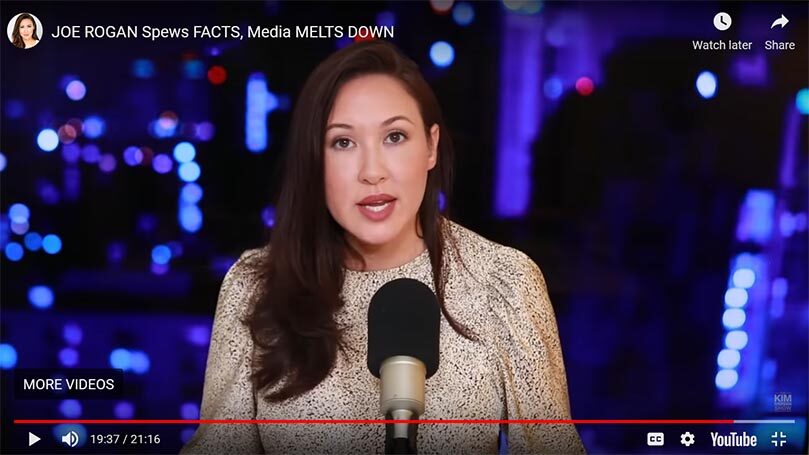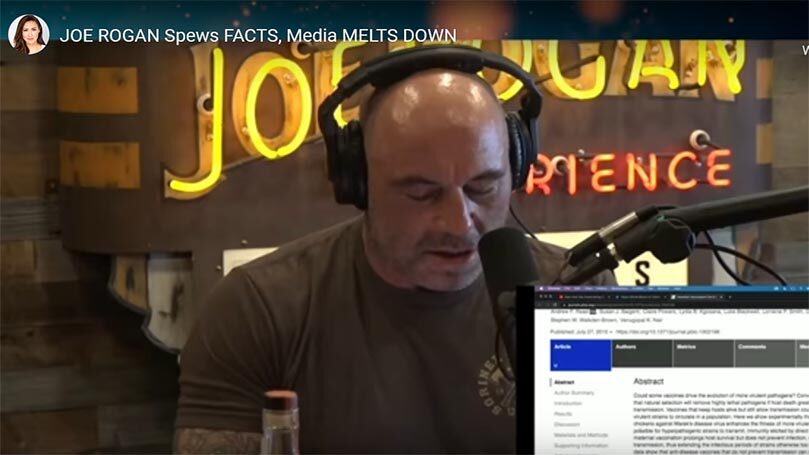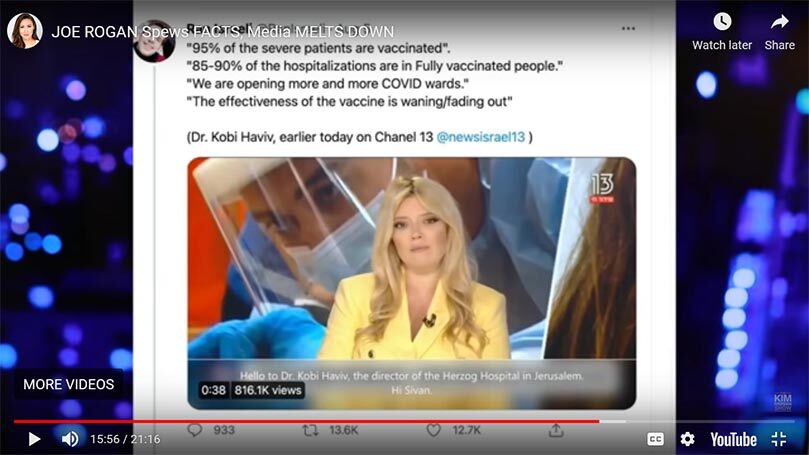
Americans no longer talk to each other, they entertain each other. They do not exchange ideas, they exchange images. They do not argue with propositions; they argue with good looks, celebrities and commercials.
—Neil Postman, Amusing Ourselves to Death
In a capitalist society, the bottom line is the bottom line. All media content is driven by the market — the more “eyeballs” you can snag the more money you make. People get hung up on whether the content is right, left, or the middle. In fact, the dominant ideological agenda is entertainment in the service of capitalism. The true purpose of most media content is not to reveal or educate. The true purpose is to deliver you to the advertisers, the marketers, so they can sell you things and enhance the bottom line.
An obvious example of this is FOX News. Rupert Murdoch looked at the market and realized that advertisers didn’t have easy access to an influential portion of the market — politically conservative viewers. So, he created FOX News to deliver content that would appeal to these viewers, capitalizing on the lack of conservative voices in the marketplace at that time. Of course, media consumption habits are much more complex than that. There are a lot of people who sample opposing viewpoints, as an interesting 2014 Pew Research Center study explains. Still, regardless of politics, the goal of media content is to deliver you to the advertisers. Whenever you view any media content, you should keep this in mind: the ideological agenda is capitalism.
To expose the fictions fed to media consumers by the capitalist ruling class, we need to improve our media literacy. Now more than ever, we need to marshal our critical thinking skills and make a full-on assault on the cloying, vacuous media environment that threatens to rob us of our capacity to think. If we don’t act, we will find we don’t need to worry about oppression. Our media of choice will distract us from the worry by offering engaging entertainment instead of serious discourse addressing serious issues A recent Pew Research Center survey (2021) suggests that 40% of Americans believe social media is an important source for news about COVID. So, if I am going to demonstrate how media literacy skills can rescue us from the oppression of mindless entertainment, I should begin with social media. This is one of the reasons I chose a YouTube video to show how to critically examine what you consume.
I spent at least nine hours researching Kim Iversen’s lecture on the “facts” about COVID treatments. She begins with another social media source — a clip from “The Joe Rogan Experience.” So Iversen’s lecture is a video within a video, and I’ll be deconstructing both. The topic is important stuff, considering our nation is experiencing 2,000 deaths a day from COVID. So, clarity, context, and accuracy are crucial.

Now my job here is not to debate the efficacy of COVID vaccines or offer competing “scientific papers” to further confuse the issue. My intent is to offer some tips on how you might navigate the media jungle engulfing the issue. There is so much conflicting information out there (thanks, internet) that it’s a real struggle to distinguish misinformation from disinformation and fact from fiction.
Please note: the difference between misinformation and disinformation is intent. Disinformation is spread with malice aforethought, while misinformation is simply spread unwittingly. However, unwittingly passing on disinformation does not mean the intent is pure. It’s still disinformation.
I always start by examining the credentials of the messenger. It helps me decide the level of credibility I will assign to the message. In this case, I must look at Rogan and Iversen. I know standards may vary, but for this discussion, I would like to stipulate that on the topic of the coronavirus, specifically COVID-19, I look for some background in science, including medicine generally and epidemiology or virology specifically. Some background in ethical journalism (see the Society of Professional Journalists’ code of ethics), fact-checking, or research is good, too. Of course, not all credentials are equal, so I look for more rather than less.
In the case of Joe Rogan, his biography presents his credentials as follows: martial artist, sports commentator, podcaster, Ultimate Fighting Championship color commentator, comedian, and host of Fear Factor. He reportedly went to college at the University of Massachusetts Boston but dropped out early. He launched his podcast in 2009, giving him an important platform for self-promotion. His entrance into the COVID discussion appears to have been enhanced by his COVID diagnosis and his podcast discussing his treatment for the virus, which, he said, included the unproven drug ivermectin. For more on ivermectin and its uses see the National Institutes of Health (NIH) website.
Bottom line, the NIH has this to say: “There is insufficient evidence for the COVID-19 Treatment Guidelines Panel (the Panel) to recommend either for or against the use of ivermectin for the treatment of COVID-19.” Rogan’s fans may take his anecdotal evidence at face value. Unable to get ivermectin for humans, some people opt for the version of the drug used on horses, which they can purchase at their local feed store.
The results are not pretty. Doses for horses are much greater than what would be prescribed for humans. According to the Federal Drug Administration (FDA), overdosing ivermectin can cause skin rash, nausea, vomiting, diarrhea, stomach pain, facial or limb swelling, seizures, liver damage (hepatitis), and a sudden drop in blood pressure.
I’m guessing Rogan found a doctor for humans willing to prescribe the drug.
A place to start looking for credentials for Kim Iversen would be the biography on her website. Her biography is vague on when she began her career. From my read, she’s bounced around a good deal, spending a good amount of time in talk radio. About halfway through the bio, she finally gets specific. She says that in 2013 she joined Premiere Radio Networks, which syndicated talk radio shows including Rush Limbaugh, Ryan Seacrest, and Steve Harvey. In 2017 she left to pursue a career in on-camera digital shows (better known as YouTube). She has a bachelor’s degree from the University of California, Davis, in philosophy “with an emphasis in Ethics.” She has just under 300,000 subscribers, with an average of 15,000 views per video. She calls herself a progressive.
So, we have one podcaster who has no medical or science credentials and a YouTuber with experience primarily as a talk show personality. Neither has traditional experience with journalism, and their content suggests they are lacking in the area of ethical journalism.
I will start with a quick look at the Rogan video. Rogan reads a “quote” from what he calls a “scientific paper” from 2015. The clip Iversen chose doesn’t mention the author(s), therefore I don’t have enough information to assess whether the “scientific paper” he’s using is credible.

According to Rogan, the paper says, “Imperfect vaccination can enhance the transmission of highly virulent pathogens.” He follows that up with another quote: “Vaccines that keep the host alive but still allow transmission can thus allow virulent strains to circulate in a population.” Then he goes on to interpret this information, saying it means that by aiming for full vaccination, we are paving the way for more dangerous mutations of the virus.
We must remember that Iversen chose part of the Rogan discussion, which means we may be missing the context of the discussion. In addition, Rogan quotes out of context from the “scientific paper” and then proceeds to interpret the quotes. The problem here is that the audience does not have enough information to evaluate the source. Not all “scientific papers” are credible. Furthermore, Rogan makes assumptions about the meaning of the quotes he chose without benefit of the context of the paper.
Without [context], the messenger may skew the meaning of the message.
Providing context is challenging. But it’s important because without it, the messenger may skew the meaning of the message. One example would be reporting on Hillary Clinton’s defense of a child rapist in 1975 while she was teaching at the University of Arkansas School of Law. There, she established the University of Arkansas School Legal Aide Clinic. The story was told many times over, and as is often the case, each time it was told, information changed ever so slightly. In the end, the charge against her was that she volunteered to defend the alleged rapist who was found not guilty. Perhaps the most damning of charges was that Clinton laughed about the case during an interview in 1980.
First, there are many inaccuracies here. She did not volunteer but was assigned the case by a judge. Her client was not found not guilty. He pleaded to a lesser charge. These inaccuracies changed the story significantly.
The lack of context compounded the harm to Clinton. According to Fact Check.org, Clinton did laugh during the interview, but her laughter came when she recounted unusual events during her defense. Simply saying she laughed about the case leaves out important context, making her seem like a callous person who belittled the alleged crime. Fact Check.org reviewed the situation and published a well-sourced examination. In this case, removing context provided Clinton detractors with emotional information that created a false narrative. On its own, the laughter was real but given context, the narrative was not.
Back to the Rogan clip, it’s important to note his faulty logic. He uses two quotes (out of context) to draw a conclusion which, on its face, is ridiculous as demonstrated by a mountain of scientific information about how vaccines work (see “How vaccines work” on a variety of credible websites including the CDC, the NIH, and WHO). Unfortunately, his audience is denied the ability to evaluate his logic because he offers no opportunity to go to the original source where the faulty assumptions would be revealed.

On to the Iverson video, which runs just over 20 minutes. At 15:55, she refers to Israeli health official Kobi Haviv, showing a picture from a website. The picture shows a blond woman (who is a news presenter). Showing this picture while talking about Haviv leads the audience to think Haviv is a blond woman when, in fact, Haviv is a bald man. Now while some might call this nit-picking, it allows me to address the issue of text/visual continuity. Even beginning journalists using a visual medium know that pictures and text must match. If the text refers to two-headed turtles, it’s important that the picture shows a two-headed turtle and not an elephant. Otherwise, the audience will be confused or at least, not retain the information at all. Technically, portraying Haviv as a blond woman is inaccurate and creates a lack of clarity. Even a technical mistake like this can reflect poorly on the messenger.
There are a few places where Iversen uses statistics in a way that could confuse the audience. In some places, she draws conclusions using faulty logic, presenting the data out of context, and not offering complete sourcing that would allow the audience to seek out the data from its original source.
The lack of context leads to faulty logic.
At around 17:39, Iversen says data showing a decline over time of the effectiveness of the vaccine suggests that vaccine mandates for work or going into restaurants make no logical sense. What is not logical is the association between the decline of the vaccine effectiveness and vaccine mandates. Those of us who get a yearly flu shot understand that not all vaccines guarantee lifetime protection. We know that if we didn’t get a yearly flu shot, we would be at higher risk of getting the flu and passing it to other unvaccinated people. Vaccine mandates are designed as one way of allowing businesses and eateries to get closer to a return to normal in addition to providing a vaccinated person who gets COVID some protection against hospitalization. What is most disappointing about Iversen’s discussion is that she never mentions that vaccines should work in concert with other strategies such as masking, physical distancing, and handwashing. Again, the lack of context leads to faulty logic.
Even more confusing is her referencing a Carnegie Mellon study, suggesting it is evidence that vaccine mandates make no sense. She references one finding (among many) that seems to indicate that survey participants who had a PhD were more hesitant to get a vaccine. She suggests that is because PhDs are more likely to read the research on vaccines and therefore have information less-educated people don’t have. The authors of the report say they had an unusually large sample size — around 10,000 respondents with a PhD — and that the unusual finding warrants more investigation into hesitancy among PhDs. Researchers make this suggestion when they find data that seems to be contrary to conventional wisdom, common sense, or other research findings.
Journalists love to quote studies, but they don’t want to have to go into the actual study to draw conclusions. That’s because reading the original source of the study is complicated. They prefer to report what they consider the most startling results over what might be less eye-catching but more significant. There are a lot of journalists who jumped on the PhD findings of the Carnegie Mellon study. At the same time, they failed to share information that might give some context (yes, there’s that word again) to the data. I’m talking about information like this:
- The “study” has yet to be peer reviewed. In the world of research, scientists create a report on findings which is shared with scholars in the appropriate field of study. Those scholars examine the research to see if it is valid. According to Elsevier, a publishing company specializing in scientific and technical research, the goal of peer review is to validate academic work and improve the quality of published research. While the system has its flaws, it is the only accepted process for research validation and has been in use for 350 years.
- The “study” is an analysis of a survey conducted in collaboration with Facebook. So, the people who responded to the survey are Facebook users. That means the sample, while large, is not random. Scholars believe data collected from a random sample is more accurate because everyone has a chance to be in the sample. They also believe a random sample helps researchers avoid bias they may have that could show up in the data they collect. So, for this study, if you are not on Facebook, you are not surveyed. Some researchers might object to its data because it is not representative of the general population.
- Participants self-selected. This means a computer did not create the sample randomly. Only people who chose to participate — who volunteered to be surveyed were studied. The problem here is that a sample of self-selected participants also could produce biased data.
To say a study has not yet been peer reviewed is to say it has not received validation by other scholars in the field, who might object to the data because participants were not chosen randomly and, in fact, volunteered to participate. So, we might want to reserve judgment on the credibility of the study until the peer review is in.

Any conversation about COVID-19 could have an impact on the public’s ability to make informed decisions about their health and the health of those around them. So it is crucial that statistics quoted and conclusions stated should be backed up by evidence. Around 17:15, Iversen claims, “We don’t have enough vaccines to be giving everybody and their dog a vaccine.” She offers no evidence to support this idea and ignores news coverage reporting concern from state health officials about the hundreds of thousands of wasted vaccine doses. Some in her audience might wrongly assume we have a shortage of vaccines.
So, what good is Josh Rogan’s podcast or Kim Iversen’s YouTube videos? Really, they are only good for mindless entertainment. That’s just fine for them as long as they are raking in the sponsors and subscribers. And they are not alone. The website Podcast Insights estimates there are more than 48 million podcast episodes. Bandwatch.com tries to keep track of statistics about YouTube. Researchers at Bandwatch estimate 1.9 billion monthly logins, including 90% of America’s 18–24-year-olds. That’s a lot of eyeballs.
As I pointed out earlier, in a capitalistic society media content is designed to deliver the audience to advertisers because if it doesn’t, no one’s making money. And the most successful lure is entertainment, not thoughtful, well-reasoned public discourse. This is why media literacy should be part of our curriculum from pre-school through higher education. It’s not a new idea. The Canadians have required teaching media literacy skills in the schools for decades. Deconstructing the media we consume is not easy or entertaining. But it needs to be taught because it is crucial to avoid being indoctrinated by agenda-driven, sensationalized content and lulled into inaction and apathy.
Neil Postman penned his critique of the culture of show business in 1985, long before social media entered the arena. He wrote about a culture driven by a desire to entertain rather than inform. He titled his critique Amusing Ourselves to Death. It’s a warning.
When a population becomes distracted by trivia, when cultural life is redefined as a perpetual round of entertainments, when serious public conversation becomes a form of baby-talk, when, in short, a people become an audience, and their public business a vaudeville act, then a nation finds itself at risk; culture—death is a clear possibility.
Images: top, Mind over media, Steve Rhodes (CC BY-NC-SA 2.0); 3 screenshots from Iversen’s show (YouTube); COVID-19 vaccine, Alachua County (CC, public domain).


 Join Now
Join Now